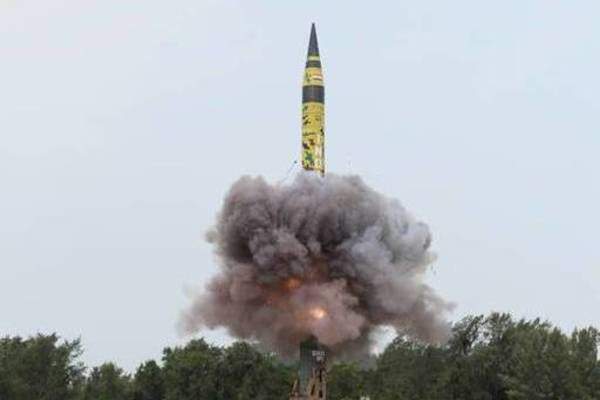
India has successfully flight tested the long-range ballistic missile Agni 5 from Abdul Kalam Island, formerly known as Wheeler Island, off the Odisha coast.
Indigenously developed by the Defence Research and Development Organisation (DRDO), the missile took off from mobile launch pad number four of the Integrated Test Range in the Bay of Bengal, defence sources said.
During the sixth flight test, the entire range of radars, electro-optical tracking stations and telemetry stations followed the weapon throughout the course of the trajectory, reported the Press Trust of India (PTI).
Defence sources were quoted by the PTI as saying: “The flight performance of the missile was tracked and monitored by radars, tracking instruments and observation stations all through the mission.”
According to a DRDO official, the Agni 5 trial tested several new home-grown technologies, such as navigation systems, very high accuracy Ring Laser Gyro based inertial navigation system (RINS) and the advanced micro navigation system (MINS).
With a strike range of 5,000km, the missile is capable of turning towards the earth after reaching the peak of its trajectory and continuing its journey towards the intended target with an enhanced speed supported by the earth’s gravitational pull.
The missile path is accurately determined by the advanced on-board computer and inertial navigation system.
On 19 April 2012, India conducted the first test of Agni 5, while the second was conducted on 15 September 2013, the third on 31 January 2015, fourth on 26 December 2016, and the fifth on 18 January this year.



